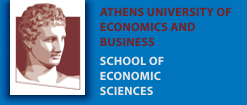| Authors |
Brock, W. and Xepapadeas, A. |
| Title |
Natural world preservation and infectious diseases: Land-use, climate change and innovation |
| Abstract |
Scientific evidence suggests that anthropogenic impacts on the environment, such as land use changes and climate change, promote the emergence of infectious diseases (IDs) in humans. We develop a tworegion epidemic-economic model which unifies short-run disease containment policies with long-run policies which could control the drivers and the severity of IDs. We structure our paper by linking susceptible-infected-susceptible and susceptible-infected-recovered models with an economic model which includes land-use choices for agriculture and climate change and accumulation of knowledge that supports landaugmenting technical change. The contact number depends on shortrun containment policies (e.g., lockdown, vaccination), and long-run policies affecting land use, the natural world and climate change. Climate change and land-use change have an additional cost in terms of IDs since they might increase the contact number in the long run. We derive optimal short-run containment controls for a Nash equilibrium between regions, and long-run controls for climate policy, land use and knowledge at an open loop Nash equilibrium and the social optimum and unify the short- and long-run controls. We explore the impact of ambiguity aversion and model misspecification in the unified model and provide simulations which support the theoretical model. |
| Creation Date |
2023-11-08 |
| Keywords |
infectious diseases, SIS and SIR models, natural world, climate change, land use, containment, Nash equilibrium, OLNE, social optimum, land-augmenting technical change |
| Classification JEL |
I18, Q54, D81 |
| File |
2023.EID.Innovation.pdf (922794 bytes) |
| File-Function |
First version |
|
Copyright © 2009 [D.I.E.S.S. A.U.E.B.]. All rights reserved.
|

